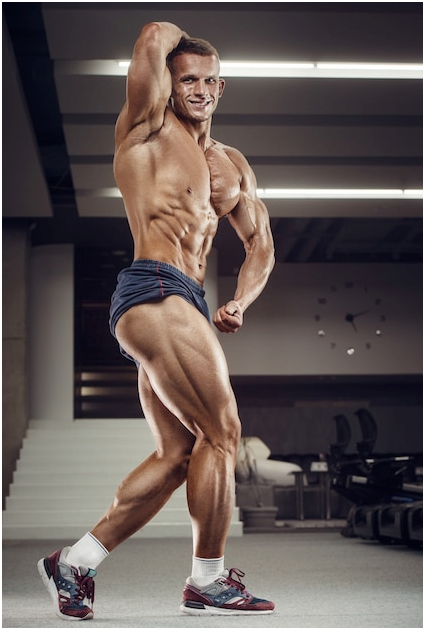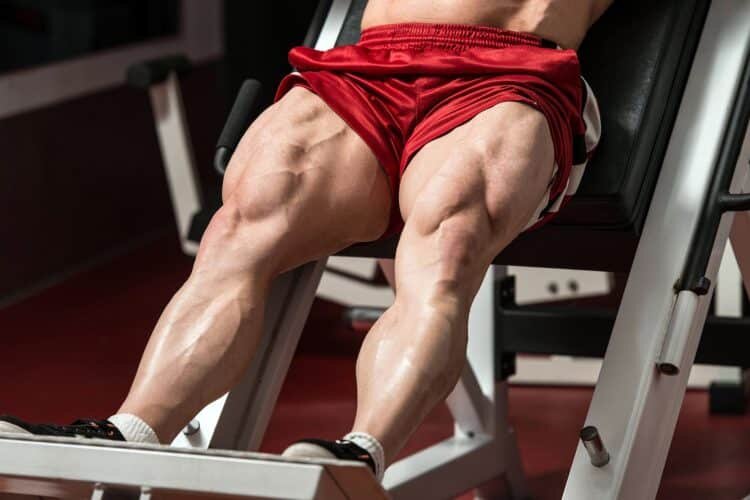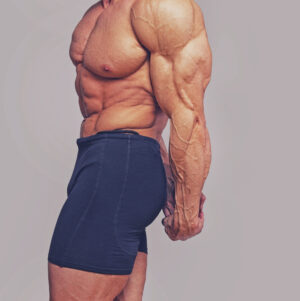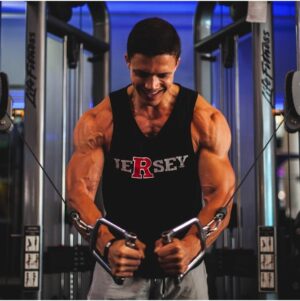Leg muscles play a crucial role in our overall fitness and everyday activities. Having strong and well-developed leg muscles not only enhances our physical appearance but also improves our performance in sports and reduces the risk of injuries. In this comprehensive guide, we will explore the importance of leg muscle development, various exercises to strengthen the legs, the significance of stretching and flexibility, cardio exercises for leg strength, nutrition for muscle growth, training progression, post-workout care, and an example training program for optimal results.
Why Leg Muscle Development Matters.
Leg muscles are the powerhouse of our body and are responsible for providing support, stability, and mobility. They play a vital role in activities such as walking, running, jumping, and lifting. Strengthening the leg muscles can improve our balance, agility, and overall athletic performance. Additionally, having well-developed leg muscles can enhance our metabolism, leading to increased calorie burning and better weight management.
Understanding the Leg Muscle Groups.
Before we dive into the exercises, let’s take a moment to understand the major leg muscle groups and their functions:
- Quadriceps: Located at the front of the thigh, the quadriceps are responsible for extending the leg at the knee joint.
- Hamstrings: Situated at the back of the thigh, the hamstrings are responsible for flexing the leg at the knee joint.
- Calves: Found at the back of the lower leg, the calf muscles help with ankle movement and provide propulsion during activities such as walking and running.
- Glutes: The gluteal muscles, including the gluteus maximus, medius, and minimus, are located in the buttocks and are responsible for hip extension, rotation, and stabilization.
- Hip adductors and abductors: These muscles, located on the inner and outer thighs, respectively, help with leg movement and stability.

The Importance of Strength Training for the Legs
Strength training is a key component of leg muscle development. It involves performing exercises that target the leg muscles using resistance, such as bodyweight, free weights, or machines. Strength training not only increases muscle size and strength but also improves bone density and joint stability. Additionally, it enhances overall functional fitness and helps prevent age-related muscle loss.
Basic Exercises for Leg Muscles
To effectively strengthen and develop the leg muscles, incorporate the following exercises into your workout routine:
1. Squats
Squats are a compound exercise that primarily targets the quadriceps, hamstrings, and glutes. Here’s how to perform squats correctly:
- Stand with your feet shoulder-width apart and your toes slightly turned out.
- Lower your body by bending your knees and pushing your hips back as if sitting on a chair.
- Keep your chest up, core engaged, and heels planted on the ground.
- Go as low as you can while maintaining proper form, then push through your heels to return to the starting position.
- Repeat for the desired number of repetitions.
Squats can be modified by using dumbbells, barbells, or resistance bands to increase the intensity. They effectively engage multiple muscle groups and are essential for overall leg development.
2. Leg Press
The leg press machine is a great option for targeting the quadriceps, hamstrings, and glutes. Follow these steps to perform the leg press exercise correctly:
- Adjust the seat and footplate of the leg press machine to a comfortable position.
- Sit on the machine with your feet hip-width apart on the footplate.
- Push the weight away by extending your legs and keeping your knees in line with your toes.
- Slowly lower the weight back down, bending your knees while maintaining control.
- Repeat for the desired number of repetitions.
The leg press allows you to lift heavier weights compared to squats, making it an excellent exercise for building leg strength and muscle mass.
3. Lunges
Lunges target the quadriceps, hamstrings, glutes, and calves. They also engage the core for stability. Here are different variations of lunges that you can incorporate into your leg workout routine:
- Forward Lunges: Take a step forward with one leg and lower your body until both knees are bent at a 90-degree angle. Push through the front heel to return to the starting position. Repeat on the opposite leg.
- Reverse Lunges: Start by stepping backward with one leg and lowering your body until both knees are bent at a 90-degree angle. Push through the front heel to return to the starting position. Repeat on the opposite leg.
- Walking Lunges: Take a step forward with one leg and lower your body until both knees are bent at a 90-degree angle. Instead of returning to the starting position, take another step forward with the opposite leg and repeat the movement.
Lunges can be performed with bodyweight or with added resistance using dumbbells or a barbell.

Stretching and Flexibility for Leg Muscles
Stretching is an essential component of any leg muscle development program. It helps improve flexibility, joint range of motion, and prevents muscle imbalances and injuries. Incorporate the following stretching exercises into your routine:
- Quadriceps Stretch: Stand tall and grab your ankle, pulling it towards your buttocks. Hold for 20-30 seconds and repeat on the other leg.
- Hamstring Stretch: Sit on the floor with one leg extended. Lean forward from your hips and reach towards your toes. Hold for 20-30 seconds and repeat on the other leg.
- Calf Stretch: Stand facing a wall and place your hands on it for support. Step one leg back, keeping it straight, and press the heel into the ground. Hold for 20-30 seconds and repeat on the other leg.
- Hip Flexor Stretch: Kneel on one knee with the other foot flat on the floor in front of you. Lean forward, keeping your back straight, until you feel a stretch in the front of your hip. Hold for 20-30 seconds and repeat on the other side.
Perform these stretches after your workout or on rest days to improve flexibility and prevent muscle tightness.
Cardio Exercises to Strengthen the Legs.
In addition to strength training exercises, incorporating cardio exercises into your routine can further enhance leg muscle development. Cardiovascular exercises increase endurance, improve blood circulation, and promote overall cardiovascular health. Here are some effective cardio exercises for strengthening the legs:
- Running: Running is a high-impact cardiovascular exercise that engages the leg muscles, including the quadriceps, hamstrings, glutes, and calves. Start with shorter distances and gradually increase your mileage to avoid overexertion and injuries.
- Bicycling: Cycling is a low-impact exercise that targets the quadriceps, hamstrings, and calves. Whether you choose outdoor cycling or stationary biking, it provides an excellent cardiovascular workout while minimizing stress on the joints.
- Swimming: Swimming is a full-body workout that engages all major muscle groups, including the legs. It is a low-impact exercise that is gentle on the joints while providing an effective cardiovascular workout.
To optimize leg muscle development, aim for at least 150 minutes of moderate-intensity cardio exercises or 75 minutes of vigorous-intensity cardio exercises per week.
Nutrition for Leg Muscle Development.
Proper nutrition is essential for muscle growth and recovery. To effectively develop leg muscles, ensure you are consuming adequate amounts of protein, carbohydrates, and healthy fats. Here are some nutritional recommendations for maximizing leg muscle development:
- Protein: Protein is the building block of muscles. Include lean protein sources such as chicken, fish, eggs, tofu, and legumes in your diet. Aim for approximately 0.8-1 gram of protein per pound of body weight per day.
- Carbohydrates: Carbohydrates are a crucial energy source for intense workouts. Consume complex carbohydrates such as whole grains, fruits, and vegetables to fuel your leg muscle development.
- Healthy Fats: Incorporate sources of healthy fats such as avocados, nuts, seeds, and olive oil into your diet. They provide essential nutrients and support hormone production.
Ensure you stay hydrated by drinking enough water throughout the day, especially during workouts. Consider consulting a registered dietitian for personalized nutrition advice.
Training Progression.
To continually challenge your leg muscles and promote growth, it is important to gradually increase the intensity and volume of your workouts. Here are some tips for training progression:
- Progressive Overload: Gradually increase the weight, repetitions, or sets of your exercises over time. This progressive overload stimulates muscle growth and prevents plateauing.
- Variety: Incorporate different exercises, equipment, and training techniques into your leg workout routine. This helps target different muscle fibers and prevents boredom.
- Rest and Recovery: Allow adequate rest days between intense leg workouts to allow your muscles to repair and grow. Overtraining can lead to muscle fatigue, decreased performance, and increased risk of injury.

Post-Workout Care.
Proper post-workout care is essential for effective leg muscle development. Follow these recommendations to aid recovery and prevent muscle soreness:
- Stretching: Perform static stretches for the major leg muscle groups after your workout to promote flexibility and reduce muscle tightness.
- Foam Rolling: Use a foam roller to self-massage your leg muscles, targeting any areas of tension or knots. This can help alleviate muscle soreness and improve recovery.
- Rest and Sleep: Allow your body sufficient time to rest and recover between workouts. Aim for 7-9 hours of quality sleep each night to support muscle growth and repair.
Example Training Program for Legs.
Here’s an example weekly training program that emphasizes different leg muscle groups:
| Day | Exercise |
| Monday | Squats and Lunges |
| Tuesday | Rest or Low-Impact Cardio |
| Wednesday | Leg Press and Calf Raises |
| Thursday | Rest or Moderate-Intensity Cardio |
| Friday | Deadlifts and Hamstring Curls |
| Saturday | Rest or Active Recovery (Yoga, Pilates) |
| Sunday | Walking Lunges and Glute Bridges |
Gradually increase the intensity, weight, or repetitions of each exercise as you progress. Customize the program to suit your fitness level, goals, and schedule.
Conclusion
Developing and strengthening leg muscles is essential for overall fitness and performance. Incorporate a combination of strength training exercises, stretching and flexibility routines, cardio exercises, and proper nutrition into your leg muscle development program. Remember to gradually increase the intensity of your workouts, prioritize rest and recovery, and seek professional guidance if needed. By following these guidelines, you can achieve well-developed, strong, and powerful legs that support you in all your physical activities. Start your leg muscle development journey today and enjoy the benefits of a stronger lower body!


